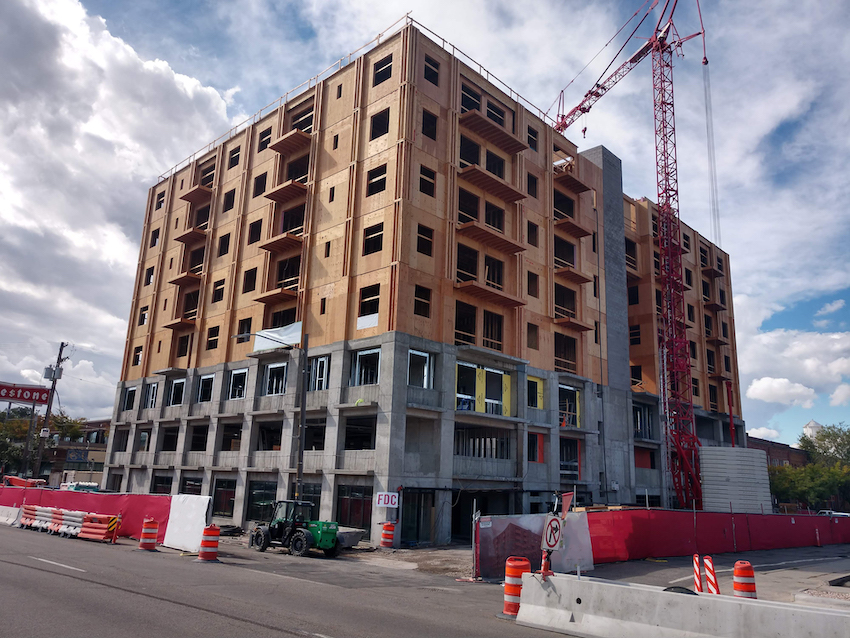Fire-Retardant-Treated Wood in Tall Buildings
Learning Objectives:
- Define fire-retardant-treated wood (FRTW) and describe its manufacturing process.
- Recognize legitimate FRTW and the International Building Code (IBC) requirements for testing, labeling and utilizing interior and exterior FRTW.
- Identify International Building Code applications for interior and exterior FRTW in Assembly, Business, Mercantile and Residential occupancies in all five Types of construction.
- Write strong, generic specifications for making the most of FRTW's advantages while improving the health, safety, and welfare of the structure.
Credits:
This course is approved as a Structured Course
This course can be self-reported to the AANB, as per their CE Guidelines
Approved for structured learning
Approved for Core Learning
This course can be self-reported to the NLAA
Course may qualify for Learning Hours with NWTAA
Course eligible for OAA Learning Hours
This course is approved as a core course
This course can be self-reported for Learning Units to the Architectural Institute of British Columbia
The building code, as with many products, regulates the use of wood in construction. Two broad categories separate materials: combustible and noncombustible. Codes limit the applications of combustible materials on the basis of fire and life safety.
This presentation focuses on the use of fire-retardant treated wood (FRTW) in tall noncombustible buildings (Type I and II) as well as mid-rise buildings (Type III).
The program will focuses on the characteristics, properties, and performance in a fire of FRTW as well as its preparation, treatment, inspection, and labeling. Forest Stewardship Council (FSC) certification in LEED projects and building code requirements related to FRTW will be covered.

Photo courtesy of Hoover Treated Wood Products, Inc.

|
Jim Gogolski is a Codes & Education Representative for Hoover Treated Wood Products, Inc., educating architects, engineers, building code officials and fire officials on the many uses of fire-retardant treated wood in the building code. Before Hoover, Jim worked with APA – The Engineered Wood Association as a Field Representative and administered their field inspection service. He also worked for a wood preservative supplier and the Southern Forest Products Association. His technical knowledge as well as experience in the building codes, the uses of wood in construction and field inspections brings a unique perspective to his programs. Jim is a member of the International Codes Council and the National Fire Protection Association. At NFPA, he is on their 1143 Committee on Wildland Fire Management and 1144 Committee on Reducing Structure Ignition Hazards from Wildland Fire. Jim holds a B.S. in Wood Products Technology from The Ohio State University, Columbus, and an MBA from Xavier University, Cincinnati. |













